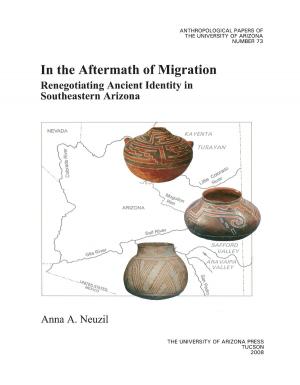Gateways to the Southwest
The Story of Arizona State Parks
Nonfiction, History, Americas, United States| Author: | Jay M. Price | ISBN: | 9780816534395 |
| Publisher: | University of Arizona Press | Publication: | May 26, 2016 |
| Imprint: | University of Arizona Press | Language: | English |
| Author: | Jay M. Price |
| ISBN: | 9780816534395 |
| Publisher: | University of Arizona Press |
| Publication: | May 26, 2016 |
| Imprint: | University of Arizona Press |
| Language: | English |
Arizona is home to some of the region's most stunning national parks and monuments and has had a long tradition of strong federal agencies—along with effective local governments—developing and managing parklands. Before World War II, protecting sites from development seemed counterproductive to a state government dominated by extractive industries. By the late 1950s this state that prided itself on being a tourist destination found its lack of state parks to be an embarrassment. Gateways to the Southwest is a history of the creation of state parks in Arizona, examining the ways in which different types of parks were created in the face of changing social values. Jay Price tells how Arizona's parks emerged from the recreation and tourism boom of the 1950s and 1960s, were shaped by the environmental movement of the 1970s and 1980s, and have been affected by the financial challenges that arose in the 1990s. He also explains how changing political realities led to different methods of creating parks like Catalina, Homol'ovi Ruins, and Kartchner Caverns. In addition, places that did not become state parks have as much to tell us as those that did. By the time the need for state parks was recognized in Arizona, most choice sites had already been developed, and Price reveals how acquiring land often proved difficult and expensive. State parks were of necessity developed in cooperation with the federal government, other state agencies, community leaders, and private organizations. As a result, parks born from land exchanges, partnerships, conservation easements, and other cooperative ventures are more complicated entities than the "state park" designation might suggest. Price's study shows that the key issue for parks has not been who owns a place but who manages it, and today Arizona's state parks are a network of lake-based recreation, historic sites, and environmental education areas reflecting issues just as complex as those of the region's better-known national parks. Gateways to the Southwest is a case study of resource stewardship in the Intermountain West that offers new insights into environmental history as it illustrates the challenges and opportunities facing public lands all over America.
Arizona is home to some of the region's most stunning national parks and monuments and has had a long tradition of strong federal agencies—along with effective local governments—developing and managing parklands. Before World War II, protecting sites from development seemed counterproductive to a state government dominated by extractive industries. By the late 1950s this state that prided itself on being a tourist destination found its lack of state parks to be an embarrassment. Gateways to the Southwest is a history of the creation of state parks in Arizona, examining the ways in which different types of parks were created in the face of changing social values. Jay Price tells how Arizona's parks emerged from the recreation and tourism boom of the 1950s and 1960s, were shaped by the environmental movement of the 1970s and 1980s, and have been affected by the financial challenges that arose in the 1990s. He also explains how changing political realities led to different methods of creating parks like Catalina, Homol'ovi Ruins, and Kartchner Caverns. In addition, places that did not become state parks have as much to tell us as those that did. By the time the need for state parks was recognized in Arizona, most choice sites had already been developed, and Price reveals how acquiring land often proved difficult and expensive. State parks were of necessity developed in cooperation with the federal government, other state agencies, community leaders, and private organizations. As a result, parks born from land exchanges, partnerships, conservation easements, and other cooperative ventures are more complicated entities than the "state park" designation might suggest. Price's study shows that the key issue for parks has not been who owns a place but who manages it, and today Arizona's state parks are a network of lake-based recreation, historic sites, and environmental education areas reflecting issues just as complex as those of the region's better-known national parks. Gateways to the Southwest is a case study of resource stewardship in the Intermountain West that offers new insights into environmental history as it illustrates the challenges and opportunities facing public lands all over America.















